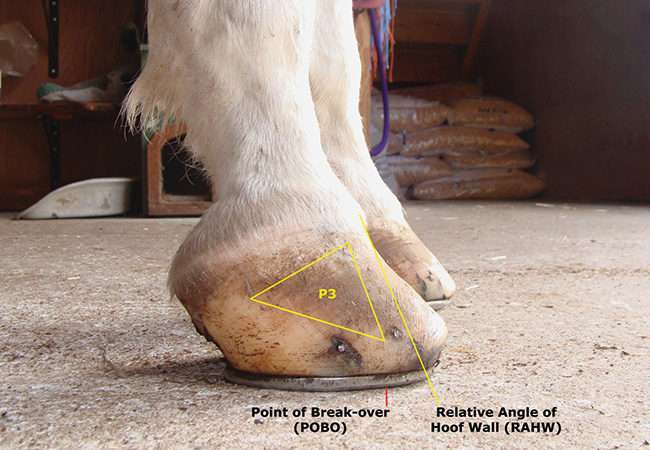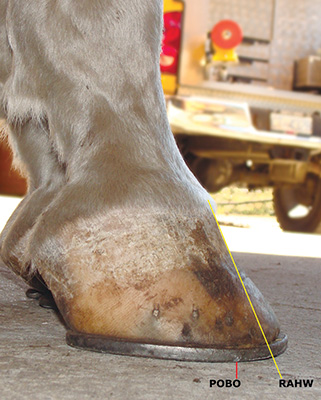American Farriers Journal
American Farriers Journal is the “hands-on” magazine for professional farriers, equine veterinarians and horse care product and service buyers.

Day 1 of study, June 23, 2012. Photo taken prior to first day of shoeing.
Breakover is the point of the stride at which the horse’s toe starts to dip so that the heels can lift.
At this point of the stride, called the stance phase, the limb is perpendicular to the ground and the horse’s body weight is directly over the hoof. Once the body weight is in front of the hoof and the limb is no longer perpendicular, the toe must begin to dip and the lifting phase begins.
This all happens in a fraction of a second, but the horse’s ability to lift its foot at the appropriate phase of stride is very important to the long term health of the foot and distal limb. A great number of injuries we see to the foot and distal limb are directly related to improper breakover, which can also cause stumbling, interfering, early fatigue and lameness.
It is fairly common in some showing or racing situations for farriers to manipulate the breakover point to achieve a certain style of movement as in gaited horses or to prevent interference as with Standardbred race horses.

Photo taken Sept. 17, 2012, prior to second shoeing
Changing the breakover or lever arm can affect the horse’s movement. Two examples with vastly different results are: